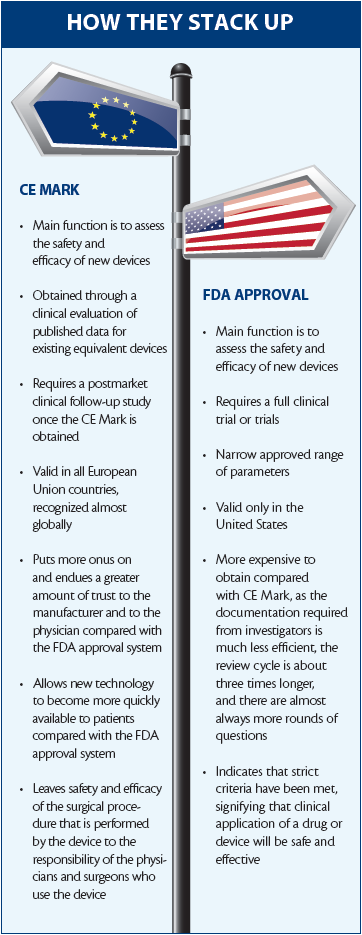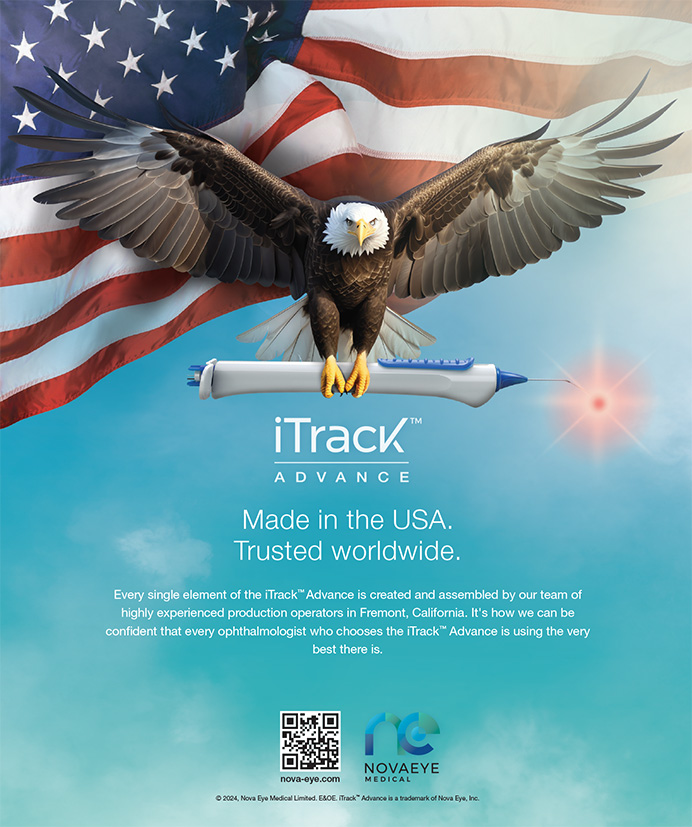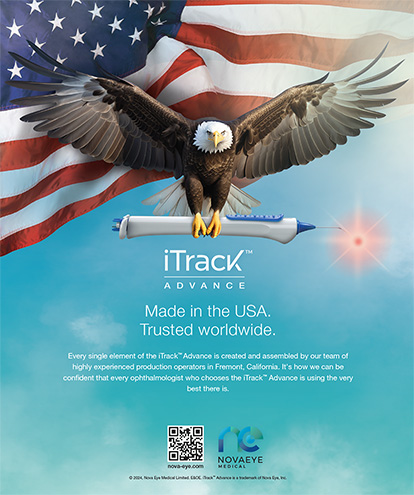CE Mark: More Efficient, More Responsive to Clinical Need

By Dan Z. Reinstein, MD, MA(Cantab), FRCSC, DABO, FRCOphth, FEBO
The CE Mark in the European Union and the FDA-approval process in the United States both perform the same functions, namely assessing the safety and efficacy of new devices. FDA approval, however, is significantly more expensive to obtain for a number of reasons:
No. 1. The documentation required from investigators is much less efficient for FDA submissions than it is for the CE Mark.
No. 2. The review cycle is about three times longer with the FDA.
No. 3. There are almost always more rounds of questions with FDA approval submissions than with those for CE Mark.
FDA approval always requires a full clinical trial or trials, whereas the CE Mark can be obtained through a clinical evaluation—a review of published data for existing equivalent devices. For a clinical evaluation, the only requirement is that the manufacturer conduct a postmarket clinical follow-up study once the CE Mark is obtained. However, this type of study is much easier to get approval for and therefore much less expensive to conduct than a clinical trial (see How They Stack up).
As an example, new and updated excimer laser ablation profiles can be introduced to non-US lasers with minimal extra work, whereas US laser users remain stuck in time with the profiles that were used for the approval studies of their devices. Another difference is that the approved range of parameters is usually much narrower with FDA approval; doctors in the United States are not given room to make the small improvements that help clinicians to optimize the applications of their devices.
The CE Mark is recognized almost globally—in addition to being valid in all countries of the European Union. By comparison, FDA approval is valid only in the United States. For this reason, it is more attractive to companies to apply for the CE Mark first. Having said that, FDA clinical trials are high-quality studies, so they do represent important milestones in the progression of scientific research in refractive surgery.
MORE ONUS, GREATER TRUST
In effect, the European CE Mark approval method puts more onus on the manufacturer—and also endues the manufacturer with a greater degree of trust. The company can decide, in its clinical evaluation, whether the existing body of evidence is sufficient to claim safety and efficacy for its new device. At the same time, physicians are also given greater levels of trust. They can decide for themselves how to use these devices in their patients, and they can change parameters based on clinical judgments instead of being wedded to settings that were specifically designed for clinical trials.
I have heard FDA personnel criticize the European system for being less stringent, but I do not agree with this assessment. There are no more product recalls in Europe than in the United States, and there are stringent quality management systems that continue to monitor results after the CE Mark has been granted. Companies are audited regularly to ensure compliance.
All of this means that the European model allows new technology to more quickly become useful to those who need it most—patients. For example, solutions for repair of refractive surgery complications such as topography-guided customized ablation have been helping patients with decentered ablations and small optical zones and night vision problems in Europe and Asia since 1998, whereas many unhappy patients in the United States are still denied this kind of help by the overly strict, expensive FDA approval process.
Dan Z. Reinstein, MD, MA(Cantab), FRCSC, DABO, FRCOphth, FEBO
• medical director, London Vision Clinic, London
• adjunct professor of ophthalmology, Department of Ophthalmology, Columbia University Medical Center, New York, New York
• professeur associé, Centre Hospitalier National d’Ophtalmologie, Paris
• dzr@londonvisionclinic.com
• financial disclosure: consultant to Carl Zeiss Meditec and has a financial interest in the ArcScan
Can We Have the Best of Both Worlds?

By A. John Kanellopoulos, MD
As a physician, I trained in the United States through medical school, residency, and three fellowships in ophthalmology, and I have been in clinical practice in the country since 1992. For personal and professional reasons, however, I also started practicing part time in Europe in 1998 and eventually switched my primary clinical focus here in the past 10 years. Despite moving from a full-time practice in New York City to Athens, I have continued to spend time in the United States doing clinical and academic work at New York University Medical School.
Through the past 23 years, I have observed the regulatory systems in both countries closely: the FDA, which governs the use of medications and surgical devices in the United States, and the CE, which is now a regulatory mark for any medical device used within the countries that compose the European Union. I have observed strengths and weaknesses in each of the two systems. Although I do not consider myself an expert on medical regulatory systems and structures, in this article I share my personal views as a clinician on the advantages and disadvantages of both. As always, my comments are motivated by my desire to provide the best possible care for my patients.
KEY DIFFERENCES
As I understand it, the FDA approves every step of the process that is required for a medication or surgical device to be used clinically, and it bases its approvals on the outcomes of large clinical trials and strict clinical evidence and outcomes. FDA approval indicates that strict criteria have been met and that clinical application of a drug or device will be safe and effective.

In the European Union, by contrast, the CE Mark applies more to whether use of a surgical device is intrinsically safe for the surgeon, the surgical staff, and the patient. The CE Mark does not determine the safety and efficacy of every surgical procedure that is performed by the device; these factors are rather left to the responsibility of the physicians and surgeons who use the device.
Through the years, I have seen great delays in the FDA approval of several techniques and technologies such as corneal collagen cross-linking (CXL). Our group was probably the second center within the European Union to begin performing CXL, under an investigative exemption protocol, after its description by the Dresden Group in 2001. Since CXL received the CE Mark in 2006, it has become a standard of care in Europe for the treatment of ectasia, for prophylactic treatment in myopic and hyperopic LASIK, and, some would argue, as a general prophylaxis for patients who demonstrate signs of suspected keratoconus at very young ages.
Unfortunately, the meticulous examination that each step involved with CXL must undergo for FDA approval (riboflavin solution origin, device safety and efficacy) has still not been completed, and CXL techniques are not yet available to most US surgeons and patients. This is clearly, in my mind, not in these patients’ best interest. This is also the reason that several US clinicians, to my great surprise, have taken the liberty of importing devices from Europe or elsewhere and using them clinically; I have heard this anecdotally.
On the other hand, there are advantages to the FDA’s being so meticulous. Most older physicians in Europe and the United States may be familiar with thalidomide—a medication used in Europe, beginning in Germany as an over-the-counter drug in 1957 for morning sickness associated with pregnancy. The use of this drug resulted in massive teratogenesis problems, specifically a rare birth defect called phocomelia that caused abnormal limb formation and had an almost 50% mortality rate. However, because the FDA never cleared thalidomide, it was never used in the United States.
Ophthalmic surgeons in Europe, myself included, have experienced several, let’s call them shooting stars—technologies that received the CE Mark early but never achieved wide clinical acceptance because significant flaws became apparent in their wider clinical use. These have included, for instance, certain types of anterior chamber IOLs and some of the so-called accommodating IOLs. I am sure that, outside the ophthalmic microcosm, in the world of general medicine, there are large numbers of other examples. So, in these cases, the thoroughness of an FDA-controlled clinical trial and the requirement for a product such as an IOL to demonstrate efficacy have potentially prevented significant morbidity in many US patients.
MEDICARE SUPPORT
The ways novel medical devices—mainly diagnostic technologies—are introduced in Europe and the United States also greatly differ, in that the US government, through reimbursements in its Medicare program, has the ability to significantly subsidize important new technologies. In ophthalmology over the years, these have included several glaucoma imaging technologies and optical coherence tomography, which first brought a revolution to posterior segment diagnosis and treatment and now is becoming an elegant tool in anterior segment surgery through its ability to image the cornea and the corneal epithelium.
Few medical systems in the countries that make up the European Union provide physicians with uniform and significant fees for the justified and preventive use of an optical coherence tomography machine, a GDx (Carl Zeiss Meditec) or a Heidelberg Retina Tomograph (Heidelberg Engineering) device, or precautionary visual fields. Because of this, many of these technologies have seen their most significant brainstorming and early clinical applications in the United States rather than Europe. This is because Medicare has functioned as a solid sponsor for the wider clinical use of these technologies, which in turn has enabled these fantastic diagnostic and treatment technologies and techniques to be developed.
Europe as a whole, on the other hand, has followed far behind in this technological revolution of wider application. For example, many European countries, including Greece, do not have the state-funded infrastructure that would allow all clinicians to bill and be reimbursed for offering these potentially vision-saving technologies to the great majority of patients. For instance, I believe that the lack of routine screenings for keratoconus in young Greeks and Cypriots is a major public health issue.
Additionally, the optometric community in Europe is minuscule compared with the US optometric body, and in my opinion, this is a significant disadvantage for public health for one simple reason: the more eye care clinicians there are, the more diseases we can and will diagnose, and the better and earlier we can offer treatments to patients. I have experienced the synergy of optometry and ophthalmology in the United States and have found that it leads to more effective screening for potentially devastating diseases such as glaucoma, diabetic retinopathy, macular degeneration, and cataracts.
CONCLUSION
I still practice in both worlds, United States and Europe, and feel privileged to be able to do so, but I have noticed pronounced differences between the two. Without trying to take sides, I hope that, someday, the ideal regulatory system will be an optimal combination of the two.
A. John Kanellopoulos, MD
• director, LaserVision.gr Eye Institute, Athens, Greece
• clinical professor of ophthalmology, New York University School of Medicine, New York, New York
• associate chief medical editor, CRST Europe
• ajkmd@mac.com
• financial disclosure: consultant to Alcon, Allergan, Avedro, i-Optics, Keramed, and Optovue


